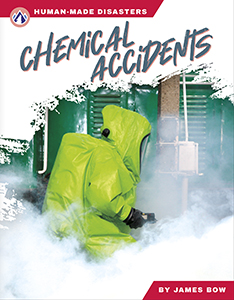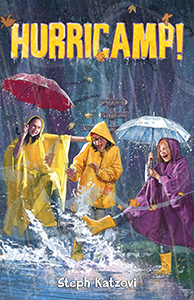Browse Our Books
You can browse our books easily with any of the following filters, hover over the filters or their titles to see their descriptions.
Reading Level
Categories
Or you can use quick search or switch to advanced search for better results...
Search Results (Found 1608 results)

Howard B. Wigglebottom 
The books in the series deliver light handed educational messages with lots of humour and colourful, engaging illustrations. They enable children to deal with anger, conflict, bullying, feel good about themselves and become better listeners.

Hugging Tree, The: A Story about Resilience 
A little tree grows all alone on a cliff, by a vast and mighty sea. Through thundering storms and the cold of winter, the tree holds fast. Sustained by the natural world and the kindness and compassion of one little boy, eventually the tree grows until it can hold and shelter others. The resilience of the Hugging Tree calls to mind the potential in all of us: to thrive, despite times of struggle and difficulty. To nurture the little spark of hope and resolve. To dream and to grow, just where we are. A Note to Parents and Caregivers by Elizabeth McCallum, PhD, provides more information about resilience, as well as guidelines for building resilience in children.

Human Body Handbook, The 
Readers will love learning about the amazing human body with these fun and informative handbooks that explain the science and mechanics behind the most incredible machine on the planet. Full of diagrams, how-it-works features, tips, troubleshooting guides, and frequently asked questions and answers, these are must-have manuals for every human body owner!

Human Body Systems 
The human body comprises several body systems, each of which contributes to the body's function. This series introduces readers to some of the body3s most important systems, including the circulatory, digestive, immune, muscular, nervous, respiratory, and skeletal systems. In addition, one title in the series explores the sensory organs. Vivid images and a helpful diagram will aid in comprehension. Additional features include a table of contents, sidebars, critical thinking questions, fast facts, an activity for further learning, a phonetic glossary, an index, an introduction to the author, and sources for further research.

Human Body, The: Organs and Functions 

Each title in the Human Body series explores the complex systems in the human body that work to support life. Readers discover the characteristics and interactions of the systems that allow the body to function properly.

Human Rights at Risk (BrightPoint Press) 
Human Rights at Risk explores some of the most urgent human-rights issues that challenge nations around the world today. Each book examines the issue, its history, which areas are most affected by it, and what organizations are doing to help. Topics include gender violence, human trafficking, refugee and immigrant rights, reproductive rights, and excessive use of force by police. Each book includes a graphic that presents key information visually, Source Notes, and resources to aid in further research.

Human-Made Disasters 
This series takes readers behind the scenes of some of the worldÎs worst spills, fires, and explosions. Readers learn the causes and impacts of each type of disaster, as well as how people are working to prevent future damage. Each book pairs short paragraphs of easy-to-read-text with plentiful photos and includes a table of contents, fast facts, sidebars, comprehension questions, a glossary, an index, and a list of resources for further reading.

Hunger Savers Club 
When Emma learns that some people go hungry because they don't have enough money for food, she enlists the help of her friends at school to do something about it. The children collect donations from their community, and they learn why everyone needs and deserves nutritious food to stay healthy. This is a sweet story that shows everyone has the power to make the world a better place.

Hurricamp! 
Ten-and-three-quarter-year-old Laura ""Noodle"" Newman had high hopes about going to sleepaway camp for the first time. Once she's there, however, Noodle is miserable. No one can help her get over her terrible homesickness. Things go from bad to worse when Noodle panics while talking on the camp's radio station. Noodle's moment to shine becomes a bout of stage fright as her bunkmates laugh at her. As a menacing hurricane heads up the coast, life at Camp Hillside turns upside down. Through the craziness, Noodle realizes that only one person can make her feel better: herself.

Huxley Higgins 
Huxley Higgins is a small seven-year-old with a BIG imaginationT an imagination that often gets him into ridiculous predicaments. Young readers will laugh along with Hux's entertaining adventures in these early chapter books.